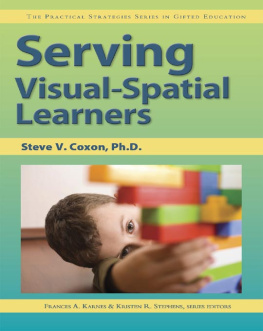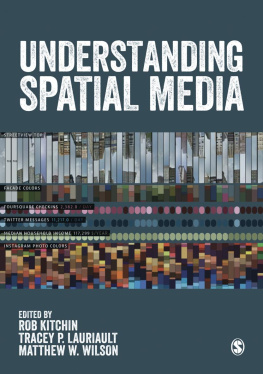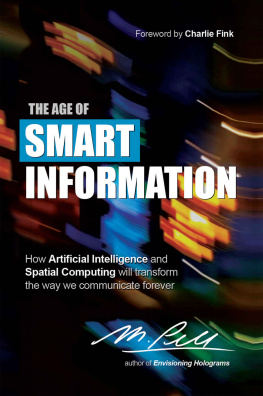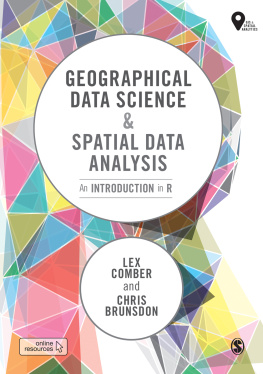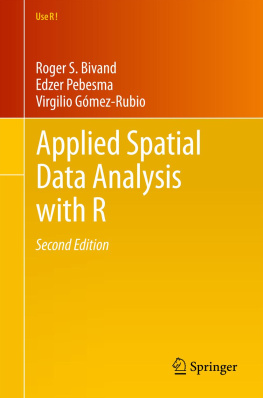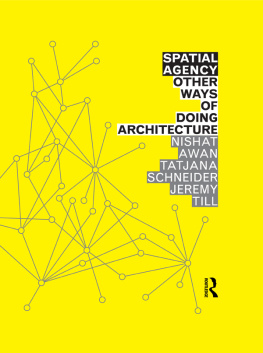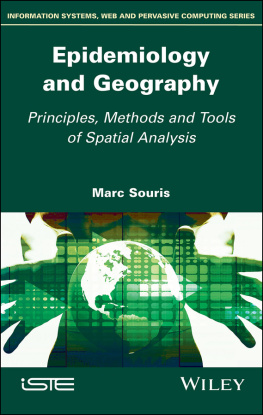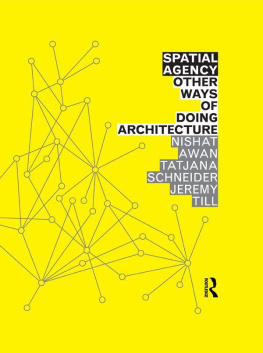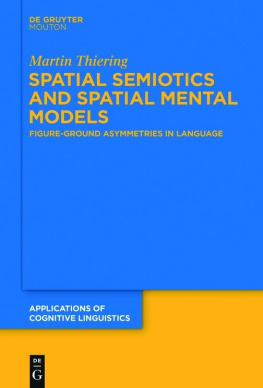The Spatial Web Copyright 2019 by Gabriel Ren and Dan Mapes.
All rights reserved. Printed in the United States of America.
For information, contact us at www.thespatialweb.org
This book is dedicated to all future generations.
CONTENTS
FOREWORD
By Jay Samit, Former Independent Vice President Deloitte Author of Disrupt You !
D ont you just hate it when you cant find your keys? One moment life is fine and the next you are frustratingly turning your house upside down like Indiana Jones searching for the lost ark. Americans spend 2.5 days per year just looking for misplaced items (where is that remote control?) and $2.7 billion dollars a year replacing lost necessities that remain missing (I now buy my reading glasses by the dozen).
Turns out humans are exceptionally good at losing things. Airlines annually lose over 3.5 million pieces of luggage. Cargo ships lose over 10,000 shipping containers per year valued at over $50 billion. Keys, glasses, and cargo can all be easily replaced. What happens when we lose things as valuable as knowledge?
The University of Alabama was created in 1820 with the esteemed goal of being a world-renowned center of learning. By the time of the Civil War, the Universitys library had one of the largest collections of books in America. When it was burned to the ground, only one book survived. Again, humanity is really adept at losing things. The worlds greatest knowledge repository in 331 BCE, the Library of Alexandria in Egypt which had hundreds of thousands of Greek scrolls, is lost to history. Twelfth-century Turks burned the 700-year-old Nalanda library in India to the ground. One hundred years later, Mongols destroyed the Abbasid Caliphates House of Wisdom in Baghdad. In the New World, Spanish conquistadors lost the Maya Codices. The loss of priceless knowledge that takes centuries to relearn shortens lives and thwarts progress.
While losing scientific knowledge can set civilizations back centuries, it pales in comparison with the loss of human identity. Perhaps the most existential question of all, Who am I? is getting harder to prove in the 21st century. Far greater than the $16 billion in fraud costs annually caused by identity theft, millions of people are no longer able to prove who they are, where they came from, or what they own. Wars and regime change have displaced more than 68 millionpeople around the world.
When government records are destroyed, the title and ownership of land or assets get lost and become unable to be substantiated. Courts are still trying to settle ownership claims to properties and artworks stolen in the Second World War. Today, there are now more refugees than after World War II and the numbers of stateless people are about to grow exponentially. When climate change floods the Ganges, Mekong, and Nile River Delta, another 235 million people will be displaced. The United Nations estimates an astonishing 1 billion displaced persons globally by 2050! But thankfully, technology can now save humanity from our losing streak.
Lost cargo, inaccessible knowledge, and corrupted data are global issues facing every business, nation, and economy. The Spatial Web not only easily solves all these problems, but provides new insights and data to drive the fourth transformation of computing: connecting the digital and physical worlds into one integrated universe of objects and ideas. The impact of this new Spatial Web will dwarf that of the Internet and change how we live, work, and thrive.
A mere couple of decades ago, the personal computer ushered in the first digital transformation by connecting humanity to an intelligent machine. The Internet powered the second digital wave by connecting individuals with all sources of knowledge. Mobile further expanded these connections by connecting people with billions of other people. As transformational as these three technologies were in changing how we live, they all were still restricted to functioning in a two-dimensional digital plane.
By leveraging the incredible data speeds of 5G (downloading a 2-hour movie in 3.6 seconds), and utilizing the power of edge computing, people will be able to combine the real world with useful data and wearables such as augmented reality glasses. Add in a layer of artificial intelligence drawing from real-time data from a trillion Internet-of-Things sensors, and our lives will go from googling for knowledge to our environment anticipating our needs.
Your smartwatch, which monitors your vital signs and compares them to all others in your cohort, can tell your autonomous car to take you to the hospital before you even realize you are having a heart attack. Your doctor will also be simultaneously notified and can provide customized instructions to the emergency room staff. Smart cities can prioritize and move traffic out of your path to assure the quickest travel time. Every medical procedure you undergo at the hospital will be immutably recorded onto your blockchain-based medical history profile. The Spatial Web will provide better patient care outcomes while cutting US healthcare costs in half. In fact, 85% of present healthcare costs are caused by heart disease and diabetes which AI and wearables are better suited for managing patient preventative maintenance. The Spatial Web holds the key to fewer doctor visits, fewer medical tests and procedures, and a lower demand for prescription medications. Healthcare is just a small example of the power of spatial computing.
Digital supply chains will interface seamlessly with sensors in warehouses and on retail shelves. Store shelves will place orders to warehouses when inventory is low. Just-in-time manufacturing will enable bespoke products delivered to your door. Maintenance crews can follow virtual arrows through buildings to find equipment in need of repair. Every mannequin in the department store will match your body dimensions and showcase the latest fashions accessorized by the clothing items you have previously purchased. Homebuyers can walk through potential homes virtually and see how their existing furniture fits the new home while spatially previewing carpets and window treatments from vendors that have the exact measurements of each room or window. Digital goods can be licensed to specific geographic locations and AI smart contracts will be able to make micropayments for a host of new goods and services. Trillions of dollars worth of new companies and innovative products will enhance our daily lives.
The Spatial Web holds so much promise for improving our lives that those companies failing to invest and embrace in the future will go the way of Kodak and Blockbuster. Companies that I work with such as Google, Amazon, Facebook, and Apple are already investing billions to provide the tools and platforms needed to utilize the Spatial Web. It is up to the entrepreneur to create the next generation spatial apps and services that will fuel the future. With this book, Gabriel Rene and Dan Mapes are the Lewis and Clark of this pioneering adventure. And as you are reading this, you are already in possession of the map they provided for your own personal discovery.
PREFACE
FROM FLATLAND TO SPACELAND
I n 1884 English schoolmaster Edwin A. Abbott wrote a satirical novella about a fictional two-dimensional world of Flatland and a particular Square that encounters for the first time a three-dimensional entity known as the Sphere and its tales of Spaceland. This now-famous story has been told and retold for more than a century. Carl Sagan re-introduced the Flatland narrative into popular culture in his monumental Cosmos series. In the story, paraphrasing Sagan, the inhabitants of Flatland have width and length, but no height. Some are squares; some are triangles; some have more complex shapes. They scurry about, in and out of their flat buildings, occupied with their flat businesses and flat interests. They are familiar with left-right and forward-back but have no concept about up-down. Now imagine the inhabitants of Flatland. Someone may suggest that they imagine another dimension. And they respond, What are you talking about? There are only two dimensions. Point to that third dimension. Where is it? To them, the mere suggestion of other dimensions appears absurd.




